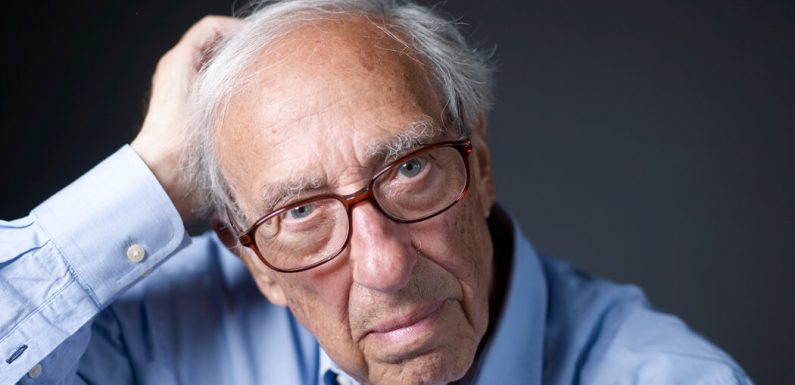
Edmond H. Fischer, a Nobel Prize-winning biochemist whose help in discovering a fundamental regulatory mechanism in cells paved the way for the development of drugs for cancer, diabetes and other diseases, died on Aug. 27 in Seattle. He was 101.
The Lindau Nobel Laureate Meetings in Germany, where Dr. Fischer was a frequent speaker at the organization’s annual forums, announced the death.
When Dr. Fischer joined the University of Washington in Seattle as a researcher in the 1950s, he learned that a fellow university scientist, the biochemist Edwin G. Krebs, was researching a question that he, too, had wanted to solve: How do muscles find the energy they need to contract?
They teamed up to investigate an enzyme that had been discovered by the biochemists Carl and Gerty Cori, a husband and wife team who shared a Nobel for their work in 1947. Dr. Krebs had previously investigated the enzyme in muscle tissue, and Dr. Fischer had studied the enzyme in a potato. But the muscle enzyme appeared to need an extra chemical to function, whereas the potato enzyme did not.
As the two scientists dug into this apparent discrepancy, they discovered that the muscle enzyme was regulated by the addition and removal of phosphate groups, a process called reversible phosphorylation.
Many processes in cells are controlled by phosphorylation, in which a phosphate molecule is added to a protein. Phosphorylation dictates how a cell grows, divides, differentiates and dies; it also regulates how hormones act in the body and how cancer proliferates. Adding or removing the phosphate acts as a biological switch, turning a variety of key cellular events on or off. Dr. Fischer and Dr. Krebs identified the enzyme that carries out reversible phosphorylation.
The discovery turned out to be one of the fundamental mechanisms of cell signaling: how cells communicate with one another.
John Scott, chair of the department of pharmacology at the University of Washington School of Medicine, compared the Fischer-Krebs breakthrough to two landmark discoveries that have shaped modern science: the shape of DNA, as a double helix, and the gene-editing tool CRISPR-Cas9. “It’s that fundamentally important,” he said in a phone interview.
When the regulation of phosphorylation goes awry, diseases like cancer, heart disease and diabetes can emerge. Many modern drugs build on the work of Dr. Fischer and Dr. Krebs by attempting to manipulate this process.
The importance of their discovery was not fully understood when they published their results in 1955. But its staggering implications unfolded over time. Now “it’s the key to understanding cancer,” said Trisha Davis, chair of the biochemistry department at the University of Washington. “It’s hard to imagine how someone could have a bigger impact in the life sciences.”
Dr. Fischer and Dr. Krebs received the Nobel Prize in Physiology or Medicine in 1992. (Dr. Krebs died in 2006.)
“The beauty of science is that you know where you start from, but you never know where you will end up,” Dr. Fischer said in an interview with the Lindau Nobel Laureate Meetings in 2020.
Edmond Henri Fischer was born on April 6, 1920, in Shanghai to Renée Tapernoux and Oscar Fischer. Eddy — as he asked everyone to call him — grew up speaking French and attended a Swiss boarding school overlooking Lake Geneva. There he took up mountain climbing and skiing. He also studied piano at the Geneva Conservatory of Music and briefly considered a career as a pianist.
But at 14 he was inspired by the work of Louis Pasteur to become a microbiologist. The decision was driven in part by his father’s death from tuberculosis. He later switched to chemistry.
Dr. Fischer moved to the United States in the early 1950s to do research at the California Institute of Technology in Pasadena. But as soon as he arrived he was offered a similar job at the University of Washington. While considering the offer, he and his wife visited Seattle and found that the towering trees and mountains that surrounded the city reminded him of Switzerland. He was smitten, he recalled, and accepted the job.
Dr. Fischer became a full-time professor at the university in 1961 and remained affiliated with it for the rest of his life. After he retired in 1990, he continued to attend biochemistry presentations, typically sitting in the front row with his friend the biochemist Earl Davie and always engaging the speaker.
“Even after his 100th birthday, Eddy was still asking questions,” said Nicholas Tonks, a cancer researcher who worked with Dr. Fischer in the 1980s and is now at the Cold Spring Harbor Laboratory in New York. “And they’re still some of the best questions in the room.”
Dr. Fischer’s granddaughter Élyse Fischer, a graduate student in molecular biology at the University of Cambridge in England, said she was in awe of him while growing up and unsure of her own ability to achieve great things in science. “But he never lacked confidence in me,” she said in a phone interview, adding that she will earn her graduate degree at the same age her grandfather did: 27.
Dr. Fischer played the piano his whole life, often performing sonatas by Mozart or Beethoven for colleagues and friends. At 101 he played at a grandson’s wedding on Lopez Island in Washington.
In addition to Ms. Fischer, Dr. Fischer is survived by two sons, François and Henri; a stepdaughter, Paula Dandliker, from his second marriage; and three more grandchildren. His first wife, Nelly Gagnaux, died in 1961. In 1963, he married Beverly Bullock, who died in 2006.
In 2017, Dr. Fischer, then 97, joined a march protesting the Trump administration’s proposed budget cuts to the National Institutes of Health and the Environmental Protection Agency. Walking with a cane, he carried a sign reading, “Ask me about reversible phosphorylation (I know a thing or two about it).”
Source: Read Full Article